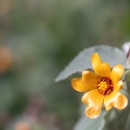This Draft Restoration Plan Addendum and Supplemental Environmental Assessment for the Chevron Pipeline Oil Spill (Draft RP Addendum/Supplemental EA) has been prepared by state and federal natural resource trustees responsible for restoring natural resources and resource services injured by the May 14, 1996 oil spill into Waiau Stream and Pearl Harbor in Oahu, Hawaii. This document is an addendum to the original Final Restoration Plan and Environmental Assessment (Final RP/EA) and it supplements the environmental assessment of one of the selected restoration alternatives in the Final RP/EA. The natural resource trustees (the Trustees) for the Chevron Pipeline Oil Spill are the U.S. Department of the Interior (DOI), represented by the U.S. Fish and Wildlife Service (USFWS); the U.S. Department of Commerce, represented by the National Oceanic and Atmospheric Administration (NOAA); and the State of Hawaii, represented by the Department of Health (DOH) and the Department of Land and Natural Resources (DLNR).
The Trustees have prepared this document to propose funding the Pouhala Marsh Enhancement Project with the remaining settlement balance for the Chevron Pipeline Oil Spill held in DOI’s Natural Resource Damage Assessment and Restoration (NRDAR) Fund and to provide a supplemental environmental assessment of the Pouhala Marsh Enhancement Project. The Pouhala Marsh Enhancement Project was evaluated and selected as a preferred alternative for implementation in the Final RP/EA, but no funds have been provided to date.


